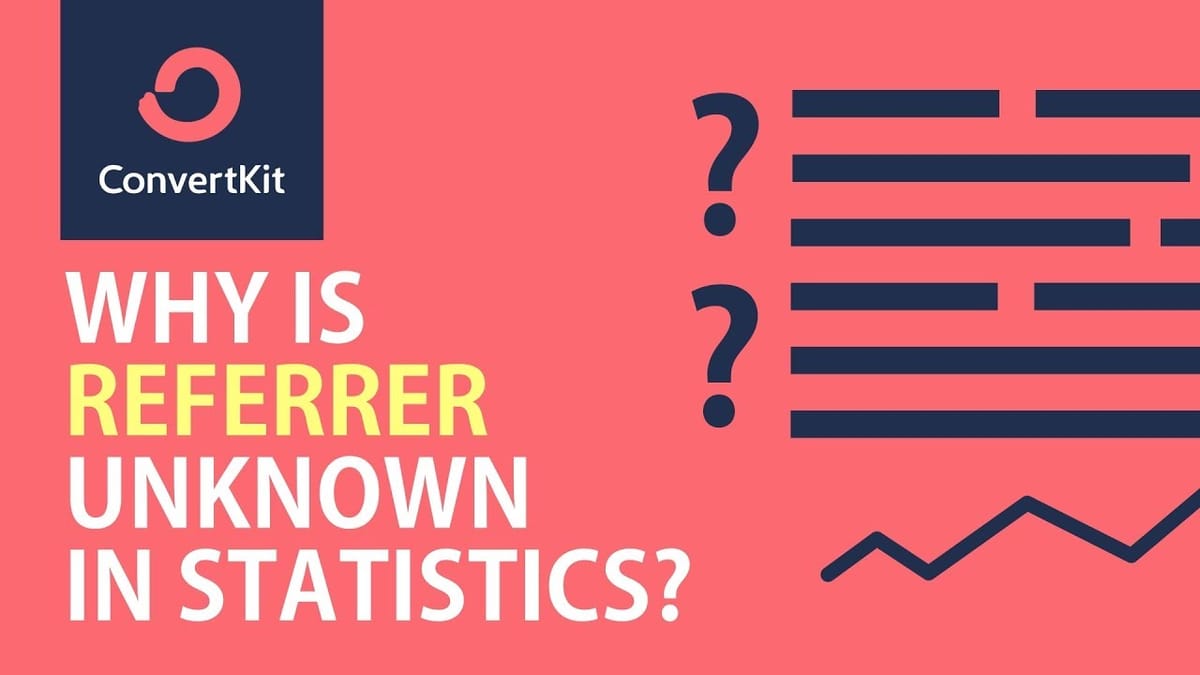Why is the referrer header 'unknown' in ConvertKit's form visitor statistics?

When you embed a Kit (formerly ConvertKit) form on your website, Kit starts to record how many visitors see the form, how many people subscribe to it and so on. In your ConvertKit account, you can see these statistics for visitors, subscribers, conversion rate, as well as 'top referrers'.
The referrer is a header sent by the browser and it contains the page the visitor was on before they arrived at your page.
This is very useful in web analytics and marketing because it gives you insight into where the traffic to your site or page is coming from and is the main way that platforms such as Google Analytics determine where the visitors originate and how they are moving around the internet from page to page.
It helps to see whether your campaigns are working properly and producing results or if social media traffic is increasing (and where it is increasing) and so on.

This is all nice and good, but what I've noticed is that most of the time, in the ConvertKit referrers list, the top one is 'unknown'. Bummer!
The 'unknown' referrer header means that the browser or the ConvertKit JavaScript code could not identify where the visitor came from.
Not very useful, is it? Why is that happening?
In this short blog post, I list the top reasons why the 'referrer' header might be empty or 'unknown':
1. The address was typed directly
The first reason might be that the visitor typed the address directly in their browser - they did not click a link.
If you have the ConvertKit form embedded on the homepage and visitors type your web address in their browser, that would be a 'no referrer' situation. They were not 'referred' from anywhere.
2. Visit from a browser bookmark
If your visitors have your website bookmarked in their browser, then clicking that link will not send a referrer header, because there isn't one.
3. Link from external application
Maybe you sent someone a PDF file with links to your pages in it, or they open your email in a desktop email client, such as Outlook, Thunderbird, etc., or even click a link in some other third-party application. Those typically do not expose the referrer header either.
4. Secure-to-insecure protocol change
The visitor may have arrived on your site on a https:// link but then they changed the protocol to http:// or clicked a link on your site that is linked with http://. When this happens, the visitor is moved from a 'secure' page to an 'insecure' page, so there's no referrer header specified.
This is a security feature in the browsers, but nevertheless, you might want to make sure that your website is accessible via https and you enforce that by making sure you specify a canonical hostname and redirection rules from insecure to secure version of your pages. This way, the visitors will always browse on the secure version and the referrer will be reported.
Nowadays, having a website without secure connection is no longer acceptable.
5. Security software, antivirus or proxy
If your visitor has some kind of security software on their computer, such as an antivirus or even a proxy (used in corporate networks), which strip the referrer header from the requests. If this happens, I'm afraid there's nothing much you can do about it.
6. Search engine crawler or bot
Finally, another reason could be that this was not a real user but just a bot. Google, Bing, AHREFS, SemRush and other bots crawling and indexing your website do not expose a referrer header.
If you see some of these statistics with unknown, surely some percentage of those are bots. Even various people scanning or loading pages from your site using a program such as cURL or other screen-scraping software might also not expose a referrer header.
Conclusion
There can be many reasons for the referrer to be unknown in ConvertKit (and other applications), but I wouldn't make such a bit thing out of it. After all, I am sure that ConvertKit did not intend to provide a full-blown analytics solution for your forms, it just shows this referrers list as a quick indication about where people seeing your forms might come from.
If you have a landing page hosted by ConvertKit, this is useful to a degree, but if you embed subscription forms on your website, then you should rely on Google Analytics for much more complete information about your traffic.
Google Analytics is more fit for purpose.





